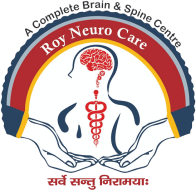NEURO / STROKE SERVICES
A brain stroke, also known as a cerebrovascular accident or CVA, is a sudden and severe disruption of blood flow to a part of the brain, which can cause damage to brain cells and impair various functions. Strokes are majorly classified into two: ischemic and hemorrhagic.
Headaches are a common health complaint, affecting people of all ages. They can range from mild to severe and may last from minutes to days. Headaches can be primary or secondary. Primary headaches are not caused by an underlying medical condition but are the direct result of abnormalities in the pain-sensitive structures surrounding the brain. Examples of primary headaches include tension headaches, migraines, and cluster headaches. Secondary headaches, on the other hand, result from an underlying cause, such as infections, injuries, or other medical conditions.
Migraines are another prevalent type of primary headache, affecting around 12% of adults worldwide. They are characterized by moderate to severe throbbing or pulsating pain, usually on one side of the head. Migraines often accompany other symptoms, such as nausea, vomiting, and extreme sensitivity to light, sound, or smell. The exact cause of migraines is not fully understood, but they are believed to involve genetic and environmental factors, hormonal changes, and abnormal brain activity.
Cluster headaches are less common but extremely painful, with symptoms often described as sharp or piercing pain behind one eye or around the eye and temple area. Cluster headaches occur in cycles, with attacks lasting between 15 minutes to 3 hours, followed by a remission period that can last weeks or months. The cause of cluster headaches is not well-understood, but it is believed to involve abnormalities in the hypothalamus, a region in the brain that controls various essential functions.

Symptoms by Best neurology specialist:

intense headache

Light sensittivity

Sound sensitivity

nausea

aura

Dizziness

Congentive fog

Vomiting
Preventive measures include:

maintaining a healthy lifestyle

regular exercise

managing blood pressure

a balanced diet

addressing risk factors such as smoking, excessive alcohol consumption, and diabetes.

maintaining a healthy weight.


